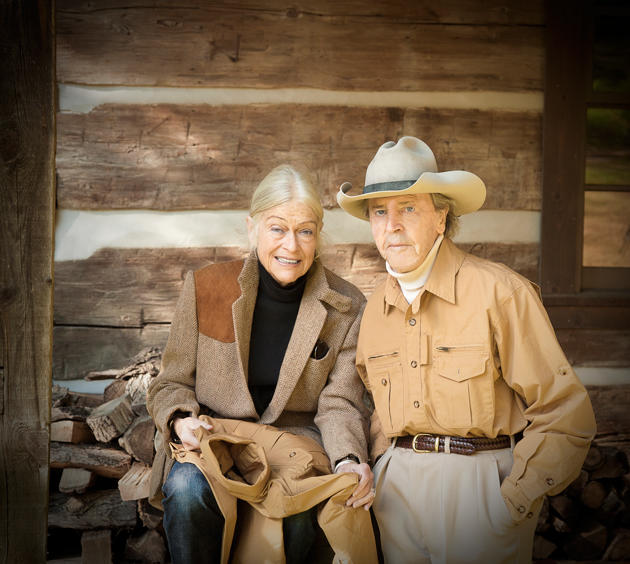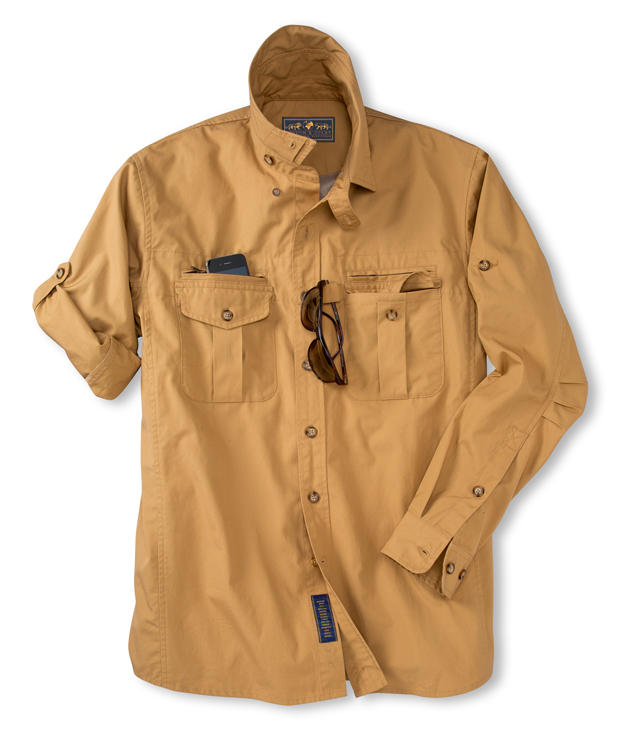From the March/April 2015 issue of Sporting Classics.
When I first moved to New York back in the early ’70s, the world’s greatest sporting goods store stood on the corner of Madison Avenue and 45th Street. Its name was Abercrombie & Fitch.
Today Abercrombie & Fitch is most famous for making the kinds of clothes you won’t let your daughter wear and marketing them in the kinds of catalogues you don’t want your wife to catch you reading, but back in the day it was the place to go when your dreams of adventure were greater than your wallet would allow.
In addition to Griffin & Howe rifles and Randall knives, A&F sold safari gear, arctic gear, Himalayan gear, and boots and hats and tents and every kind of hunting and fly fishing equipment—everything you might possibly need or want for outdoor adventure, much of it made by Willis & Geiger.
Today, Willis & Geiger is no more, a fallen victim to corporate greed and the Walmart mentality, where cost trumps quality, but pre-owned items (including clothing, believe it or not) still occasionally appear for sale on eBay at extraordinary prices, and that should tell you all you need to know about the quality of Willis & Geiger—which will also tell you something about Burt Avedon, the man (along with his partner, Susan Colby) behind Willis & Geiger for the last 20 years of the company’s life and the man now behind Avedon & Colby.

Burt Avedon and Susan Colby are partners in Avedon & Colby. They’ve worked together since their days at Willis & Geiger.
Some men manage to cram more living into a lifetime than others. Burt Avedon got his pilot’s license at the age of 12 and qualified as a multi-engine pilot at 16. In between those milestones, before he was old enough to legally drive, he and his brother built hotrods and raced them. Soon after, he got an appointment to West Point but went to UCLA instead “on an interrupted basis” and played football.
But that was far too dull for him. So in early 1941, when he was 17, he lied about his age and went to China and flew for the American Volunteer Group—otherwise known as the Flying Tigers and sometimes regarded as a mercenary unit.
After Pearl Harbor he joined the Navy and became a fighter pilot, serving in combat during both World War II (with 13 confirmed kills) and the Korean War. He has been a test pilot and a Top Gun instructor. Both in those capacities and in combat he did some things—some authorized, most of them not—that have become the stuff of legend, at least one of which made its way into the 1986 Tom Cruise movie, Top Gun. He has been a professional hunter in Tanzania and what was then Rhodesia. He has an MBA from Harvard, which must have made him unique in the annals of professional hunters. He was once married to an Italian princess. For the last 20 years, he and Susan Colby have worked together as a design team of what they describe accurately as “premium performance clothing” for companies such as Eddie Bauer, Beretta, Orvis, King Ranch, Russell/Mossy Oak, and many others.
And now, in his 90s, he has launched a new line of outdoor-adventure clothing designed and manufactured to be not just the best there is, but to be the best there ever was or will be, just as once, under his leadership, Willis & Geiger was the best of the best. I thought that might be a bit of hyperbole until they sent me one of their shirts.

So far, Avedon & Colby’s product line comprises a single shirt, which comes complete with a user’s manual.
To be accurate, you can’t really call the thing a shirt; it’s more like an essential piece of survival gear, the item you want to be wearing when worldwide chaos strikes and you have to bug out to survive a dystopian apocalypse. More cheerfully, it’s the item you want to be wearing if you’re lucky enough to go on the kind of safari that Teddy Roosevelt enjoyed. If you’re the kind of man who drives himself and his equipment to ultimate extremes, or if you are simply the kind of man who has to have the very best of the best, this is the ultimate outdoor performance shirt for you. How many pieces of clothing have you bought that come with an owner’s manual?
Space will not permit me to go through each of the features, one by one, that have been built into this shirt, but very briefly, some of those features include, but are most emphatically not limited to a retractable bi-swing back, a double reversed underarm gusset, and side panels, all of which work together to allow complete freedom of the arm without restrictive torqueing of the fabric; articulated elbows; moisture-wicking mesh; a sun collar; a throat latch; box-pleat pockets; pocket flaps designed so they can be buttoned or neatly tucked in; zipper security pockets; special buttons made from a composite of horn and urea-methanol to last forever. I wasn’t joking about the owner’s manual.
But all the details in the world are useless if the materials and the construction aren’t up to par. Let’s start with the fabric.
It is 100 percent long-staple cotton bush poplin, with a very tight, very compact weave of high-twist yarn, which means it is designed to resist the thorns of the wait-a-bit as effectively as it resists wind and water. The fabric is then treated with a water-repellent finish to make it even more impervious to the elements.
All that makes it sound about as comfortable as a suit of armor, but not so. My shirt arrived the afternoon before I left for a hunting trip, so I had no time to wash it first. I told myself I could always put an undershirt on to make it bearable, but when I got to Texas, I was delighted to find out the thing was extremely comfortable and pleasant to wear right out of the box. That’s because they nap the finish of the fabric in a way that doesn’t weaken it—unlike the cheaper surface-sanding process other companies use—but does soften it.
A choice of colors will be offered later, but for the time being it comes only in a precise replica of the traditional tea-dyed khaki color the British Army developed during their reign as masters of the Raj. Apparently, the first soldiers in India were outfitted for tropical climes in white uniforms, which promptly got permanently stained by the red clay of India’s roads. Hence the development of “British Tan,” the world’s first camouflage.
Now let’s look at the construction. The owner’s manual states that, “all seams are single-needle stitched and serged to prevent any fraying of the material.” Unless you’re a tailor it’s unlikely any of that means anything to you. It meant nothing to me, so I called my friends at Horsewright Clothing and Tack, makers of—among other great products—the finest handmade wool vests in the world.
Single-needle stitching is a finishing process that is done to the edge of the fabric to add strength and finish to a seam. Are you still with me? Serging, sometimes misspelled “surging,” and sometimes referred to as an “overlock” stitch, uses multiple threads to bind the edge of the fabric and prevent fraying. Whenever fabric is woven, there are longitudinal threads (the warp) that run in one direction, while the other threads (variously called the woof or the weft) run at right angles to the warp.
In a cheap product, stitches are simply driven through the fabric, which means they rely on the warp and woof to hold them. Over time and with repeated use (think of the repetitive putting on and taking off of a garment) the warp and weft—or woof—can literally become unwoven. Serging incorporates multiple threads in both straight and zigzag patterns to add strength and prevent that from happening. It’s the kind of small detail only an expert would think to look for, but it’s also the kind of detail that means a garment won’t begin to disintegrate two weeks into your safari of a lifetime.
Because the firm of Avedon & Colby is so new, only shirts are available at this writing, but Burt Avedon told me they have other items in the works, clothing as revolutionary in its quest for perfection as their shirt, clothing I am looking forward to seeing.
It’s hard to explain how over-designed and over-manufactured this shirt is. The best way to describe it is to say that anytime you put on a new piece of clothing, it has a certain effect: a dress shirt or a new tie may make you feel a little more handsome; a new suit might make you feel a little more elegant or professional. This shirt is exciting to wear. It makes you feel like a cross between Indiana Jones and Harry Selby. It makes you want to grab your Westley Richards sidelock and go hunting. +++
From the March/April 2015 issue of Sporting Classics.

